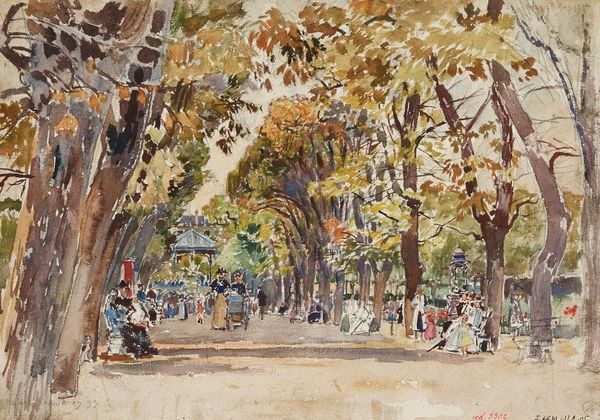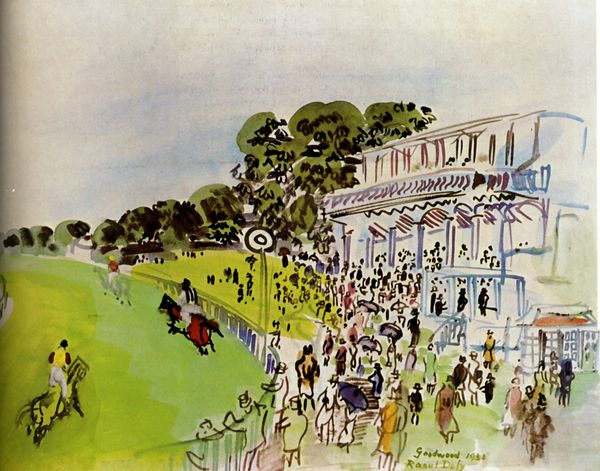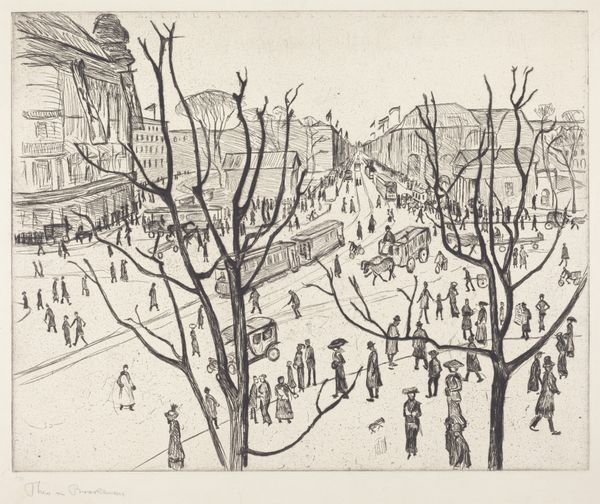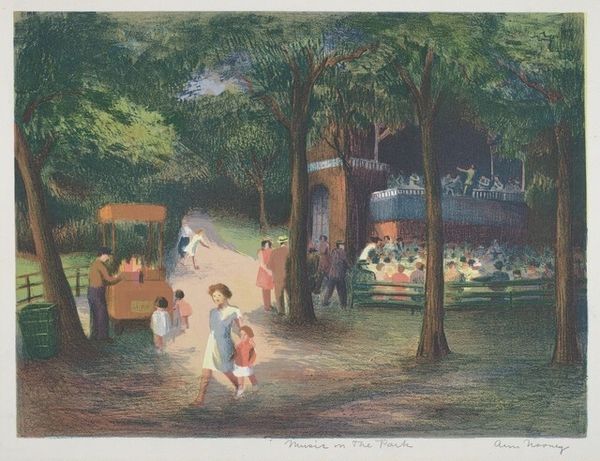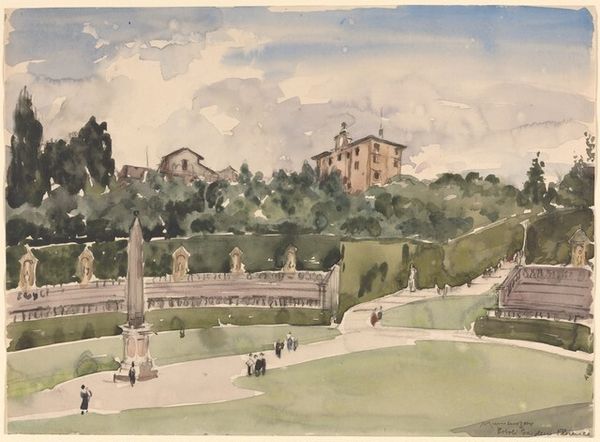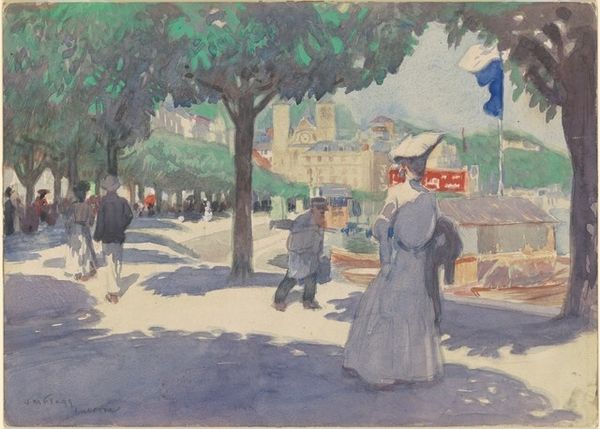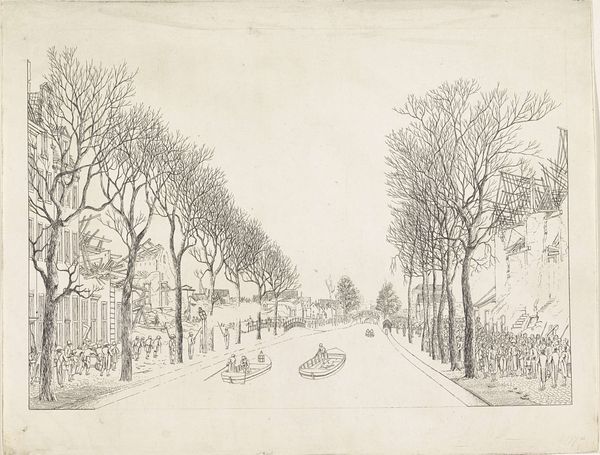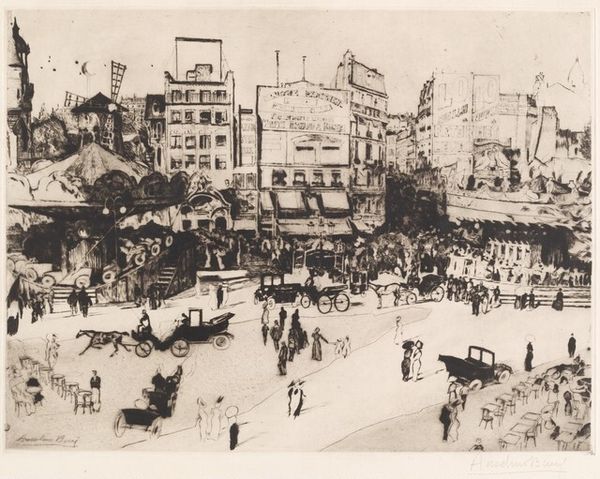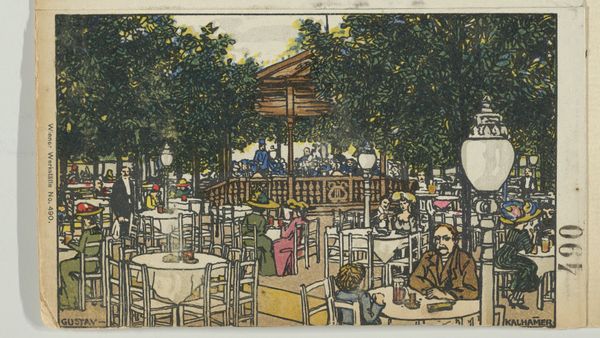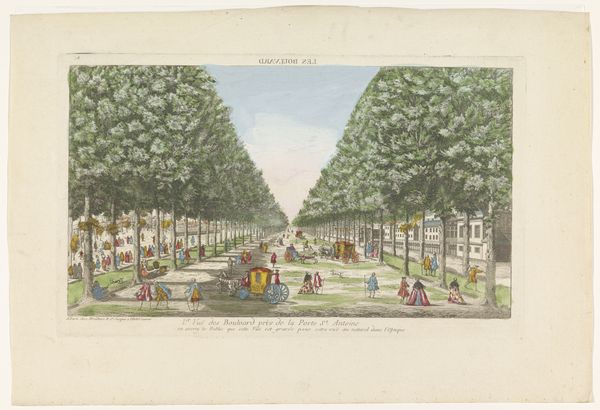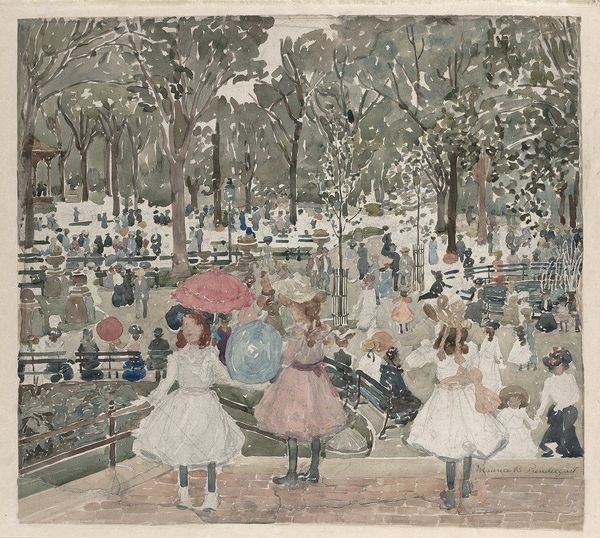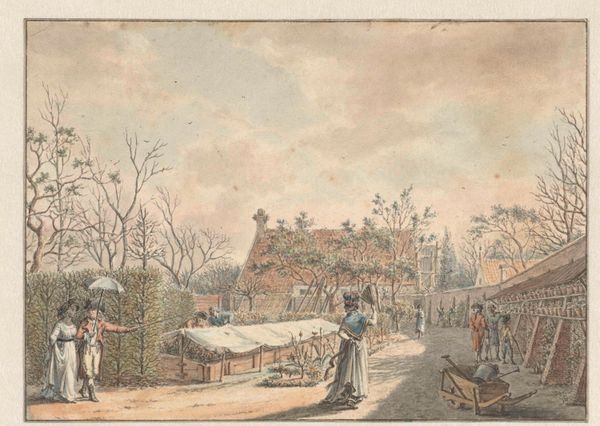
Copyright: Tsuguharu Foujita,Fair Use
Curator: This is "Champs Élysées," a watercolor by Tsuguharu Foujita, created in 1951. It captures a bustling scene in one of Paris’s most famous locations. Editor: It feels instantly nostalgic. The light is airy, almost dreamlike. There's a palpable sense of joie de vivre—but also, for me, a touch of wistfulness in the palette. Curator: Foujita's approach here showcases an interesting convergence of Eastern and Western aesthetics. As a Japanese artist working in Paris, he clearly demonstrates plein-air, impressionistic sensibilities—notice how he handles light and shadow, suggesting movement and life in the leaves of those trees— but his line work is also quite deliberate, possessing a calligraphic quality. Editor: Yes, I see that. The figures, though rendered with quick brushstrokes, retain a certain precision. To me, they evoke archetypes more than individual portraits: the bourgeois mother, the wide-eyed child, the nanny—all stock characters performing their roles against the grand backdrop of Paris. Curator: Which tells a story about class and consumption as well. Note the materials visible; the linen of the women's dresses, the wrought iron of the chairs, all likely commodities of French production. There's also the clear delineation of public versus private space, which highlights an emergent, mid-century, postwar bourgeois desire for both entertainment and escape. Editor: Exactly. The Punch and Judy show serves as an escapist fantasy, but there are flags waving, and glimpses of monuments. To me they suggest lingering trauma from wartime that permeates everything in the everyday. Curator: Indeed. And Foujita had complex experiences during the war. Returning to the point about craftsmanship, though, he renders each tiny, discrete section of the scene. It makes it clear how the piece would have required great forethought as he deployed the watercolor across the page. Editor: The overall image creates a layered sense of national and individual memory, made poignant by the transient quality of watercolor. Foujita perfectly captures Paris as both timeless icon and ever-changing lived experience. Curator: Yes. Looking at it again, I see it as a subtle commentary on leisure and labour, a vibrant document of postwar French life produced with great technical precision.
Comments
No comments
Be the first to comment and join the conversation on the ultimate creative platform.
